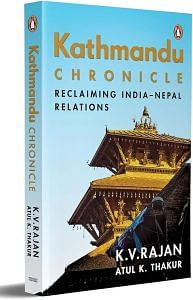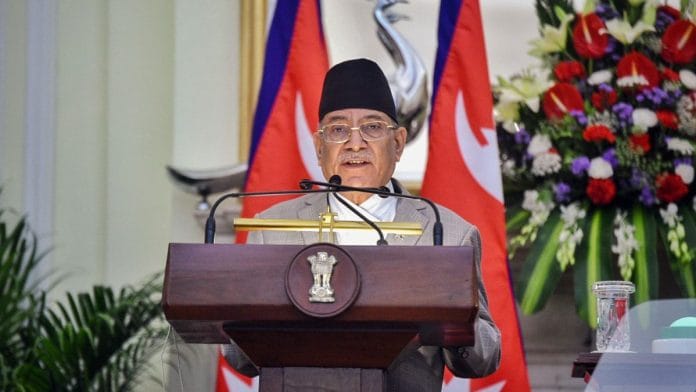It is an undeniable fact that even after seven decades since India gained independence, the two countries have still not succeeded in forging ties of mutual trust and understanding that people on both sides of the border deserve. A central reason being that despite the huge assets they enjoy by way of linkages of history, geography, religion and culture, and at people-to-people level, there is a certain absence of mutual empathy: India is unable to fully understand Nepal’s yearning for equality and sovereign space, and Nepal, in turn, is unable to understand India’s geopolitical compulsions.
There is a repetitive pattern in the story of avoidable mishaps, misunderstandings and downturns in relations; and why Nepal, in the recent words of a reputed Nepalese analyst, ‘has evolved as a sullen neighbour when it should be the friendliest of all’.
India has tried every trick in the diplomatic book, with the best of intentions and with a focus on Nepal’s long-term interests even as it sought to promote its own. Every Indian prime minister—Jawaharlal Nehru, Indira Gandhi, Rajiv Gandhi, Chandra Shekhar, P.V. Narasimha Rao, I.K. Gujral, Atal Bihari Vajpayee, Manmohan Singh, right up to Narendra Modi—has paid special attention to Nepalese needs and expectations in the hope of steadying ties on a sustainable basis, but as the French would say, ‘plus ca change, plus c’est la même chose [the more that changes, the more it’s the same thing].’ The relationship continues to be marked by uncertainty and shortcomings.
A long-standing Kathmandu perception about India is that it is constantly engaging in macro and micro management of Nepal’s internal affairs. India’s response to this is that Nepalese tend to suspect the worst about India’s intentions, and blame India when things go wrong. Ignoring India’s generosity, the fact that India has Nepal’s interests always at heart and that its advice or involvement, when it takes place, has almost always been in response to a felt and locally expressed need. The truth is that perceptions rather than hard reality have had a disproportionate influence on the evolution of India–Nepal relations. If India is to be faulted, it is for not addressing Nepal’s misperceptions about its policies, actions or intentions seriously enough and in time.
Since 1947, successive Indian governments have generally followed well-intentioned and generous policies towards Nepal. Why then the outbursts of anti-Indian sentiment which are a regular feature of the India–Nepal landscape? Why does the ‘roti–beti’ relationship which Indian leaders love to extol (as Defence Minister Rajnath Singh did only recently at the height of the controversy over Kalapani) seem to count for so little when there is any kind of a political problem? More importantly, is anti-Indianism taking new dimensions which should necessitate a review of the India–Nepal relationship itself?
Nepal’s psyche of a small, landlocked nation—excessively dependent on India, and whose identity is so much in the shadow of India’s cultural influence that it has the feeling that it is ‘India-locked’ and therefore has to constantly assert itself vis-à-vis India—has always offered fertile soil for provoking anti-Indian sentiment.
Part of the explanation for this sentiment also lies in the kind of unequal relationship which was sought to be fashioned during the East India and British Indian government years, with the small ruling elite of the day in Kathmandu basically ensuring that the core interests of the former were respected against protection from any domestic forces for democracy and development. This arrangement worked as long as Nepal was isolated from the world and ruled in autocratic fashion by a handful of influential elite families. It cannot possibly sit comfortably with the multiparty republican set-up of today’s Nepal.
Incidentally, the British also constantly dinned into influential Nepalese ears in every way available to them that ‘Indians were never to be trusted’. According to Nepalese political veterans, some of whom have passed on, several decades of brainwashing created a sense of insecurity about India, which continues to influence political attitudes to this day. Until recently, anti-Indianism in Nepal was limited in space and depth. It was to be found mainly in the Kathmandu Valley, where a pampered, over-politicized elite has for long specialized in anti-Indian activity whenever an opportunity arose. More often than not, such activity was born of frustration on the part of one or other political group in Nepal, because it expected India’s support in order to come to power (or stay in government) in the usually unstable political environment in Kathmandu—and New Delhi’s inability or unwillingness toextend such support.
 This excerpt from K.V Rajan and Atul K. Thakur’s book ‘Kathmandu Chronicle: Reclaiming India-Nepal Relations’ has been published with permission from Penguin Random House India.
This excerpt from K.V Rajan and Atul K. Thakur’s book ‘Kathmandu Chronicle: Reclaiming India-Nepal Relations’ has been published with permission from Penguin Random House India.






